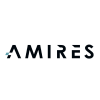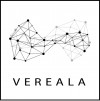The European Food Safety Authority arranged this meeting, with about 60 participants, mainly from industry, to gather first views and inputs on the EFSA 2018 ‘Guidance on risk assessment of the application of nanoscience and nanotechnologies in the food and feed chain: Part 1, human and animal health’.
The input provided to EFSA from the participants will be used by EFSA to revise and update the guidance document which will then be published, likely by the end of 2019, or early 2020 as a final EFSA Guidance. EFSA also informed that Part 2 Environmental aspects, had been delayed but that the work was in progress.
NIAs’ David Carlander gave a presentation (Bottlenecks faced in the industry and multi-disciplinary approach in risk assessment of nanomaterials: A Regulatory perspective) where e.g. the lack of standardised methods and lack of service providers where mentioned. The NIA presentation, and all others, as well as the programme is published on the EFSA website.
Due to the definition of engineered nanomaterials in the food area, where there is no threshold, EFSA is taking a very broad interpretation on who should apply the nanomaterial guidance. EFSA states in the guidance ‘…a small fraction (<50%) is always expected to be present with at least one dimension below 100 nm…’ and this would imply that all solid materials would be considered to fall under the guidance, without being considered as being ‘engineered’. Participants were informed that EFSA is expecting a new request from the European Commission (DG SANCO) to provide a guidance for ‘powders’ where the intention is that anyone working with ‘powders’ need to assess the size of their products, and should they be in the nanoscale, they should follow the nanomaterial guidance.
A presentation by Klaus Weber (AnaPath) and Nils Kruger (Evonik) showed how some poorly prepared and reviewed publications in academic papers can be very detrimental to industry and be very costly to refute. The example they presented was a 2014 study from van der Zande et al on oral nanostructured silica exposure in rats. Weber et al published a 2017 paper where they showed deficiencies in the 2014 paper. As expected, refuting an already published paper requires expertise as well as resources, and the damage on products is not easily remedied.

















